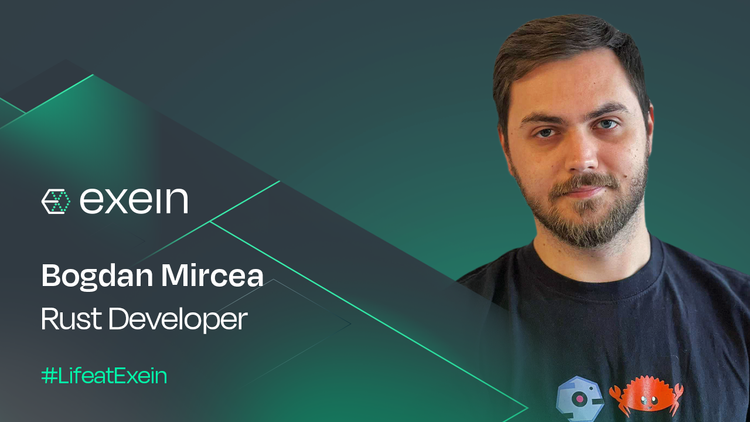Life at Exein: Decoding Human Motivation

In the hustle and bustle of our everyday lives, there's one topic that remains a perennial point of interest: what drives us? Every individual, every team, and every organization are fueled by some form of motivation. But what is it? Is it a static entity or does it change over time? How does one person's motivation differ from another's? These are some of the questions that have intrigued philosophers, psychologists, and leaders for centuries.
In our recent issue of the employee magazine, our dedicated HR team decided to engage in a comprehensive exploration of this very topic. Titled "UNDERSTANDING HUMAN MOTIVATION", the feature serves as a deep dive into the nuances of what pushes us forward, what holds us back, and everything in between.
Whether you're looking to motivate a team, seeking ways to stay driven in personal pursuits, or simply curious about the intricacies of the human mind, this piece promises to be a fascinating read. Join us as we journey through theories, real-life examples, and the latest research findings to shed light on the world of motivation. So, without further ado, let's look into the insights shared by our HR team and unearth the mysteries of human motivation!
Human motivation, like a complex maze, has always puzzled and fascinated thinkers, psychologists, and even laymen. This force, or drive, propels individuals to take action, maintain momentum, or cease efforts to attain a goal perceived as desirable. Yet, understanding it is like attempting to capture a gust of wind - elusive and ever-changing.
The Complexity of Motivation
Motivation isn't a guaranteed path to achieving our goals. Various personal and societal elements, like our values and the norms we're surrounded by, play a part in shaping our actions. So, outcomes can be hard to predict. Yet, the changeable nature of motivation is promising.
While aspects of our personality remain constant, motivation can be reshaped to better match our desires.
However, maintaining motivation isn't straightforward. At times, we all grapple with low motivation, brought on by challenges like exhaustion, uncertainties, self-questioning, or pursuing goals that might be out of reach. Here, George Kelly's idea of 'constructive alternativism' becomes pertinent. He proposed that our way of viewing the world isn't fixed, suggesting we can explore new ways of thinking and understanding.
Building on this, Abraham Maslow's hierarchy of needs underscores that our basic physical needs, such as satisfying hunger, come before higher pursuits like personal growth or seeking validation. This underscores a fundamental idea: if basic survival needs aren't met, higher aspirations take a backseat.
Evolving Theories of Motivation
Over time, the way we understand motivation has transformed. Earlier models, which were more structured and layered, have evolved into more adaptable frameworks. For instance, Clayton Alderfer's ERG model focuses on three core needs: Existence, Relatedness, and Growth, suggesting that these needs can be met simultaneously rather than sequentially.
In a different approach, David McClelland's work highlights the significance of achievement, affiliation, and power in determining our behaviors and goals at work. Every individual may lean towards one of these needs more than the others, influencing their unique reactions and aspirations.
However, the conversation about motivation isn't complete without diving into its neurological roots. At the heart of our actions is the brain's reward system, centered around dopamine, a chemical messenger. Parts of our brain, such as the striatum, are crucial in perceiving rewards and hence, in motivating our actions. Simple rewards, be it appreciation from someone or indulging in a favorite snack, stimulate this system, thereby shaping our subsequent actions.
Connecting psychology with neuroscience, a 2016 study at the University of Graz used advanced imaging to explore the brain's reactions to rewards. The results reinforced the concept that while there are common patterns in how humans experience motivation, individual variations abound. This blend of shared and unique experiences further enriches our understanding of motivation.
Motivation in the Workplace
In the complex ecosystem of the workplace, motivation plays a pivotal role in employee performance, satisfaction, and overall organizational success. To understand this better, let's delve deeper into two influential theories on motivation: Herzberg’s two-factor theory and Vroom’s expectancy theory.
Herzberg’s Two-Factor Theory: Beyond Basic Needs
Herzberg introduced a unique perspective on motivation by dividing work-related factors into two categories: hygiene factors and motivational factors.
Hygiene Factors: These are the foundational elements of a job that, when present, prevent employees from becoming dissatisfied. Think of them as the basics: fair salary, job security, and decent working conditions. However, while they might keep employees from being unhappy, these factors alone won't spur them to excel or go the extra mile. In simple terms, just because you're not unhappy doesn't mean you're truly motivated.
Motivational Factors: These are the elements that genuinely energize and drive employees to perform better and feel a sense of achievement. Factors such as opportunities for personal growth, recognition, responsibility, and meaningful work fall into this category. These factors resonate with deeper, intrinsic human needs — the need for purpose, mastery, and genuine appreciation.
A significant takeaway from Herzberg's theory is that businesses should look beyond just providing basic amenities or pay to their employees. For a truly motivated and thriving workforce, organizations need to tap into deeper, more intrinsic drivers of human behavior.
Vroom’s Expectancy Theory: The Calculus of Motivation
Vroom's expectancy theory adds another dimension to understanding workplace motivation by suggesting that motivation isn't just about the intrinsic or extrinsic rewards but also about the perception of how attainable these rewards are.
Expectancy: It pertains to the belief about whether one's effort will result in the desired performance. If an employee feels that no matter how hard they work, they won't meet the performance criteria, their motivation will wane.
Valence: This reflects the value an individual places on the rewards offered. If the rewards (be it a raise, promotion, or recognition) are not deemed valuable, motivation to pursue them drops.
Instrumentality: This is the belief that if one achieves the performance, then they will receive the reward. If an employee believes that even if they excel at their job, they won't get the promised bonus or recognition, their motivation to perform diminishes.
What Vroom’s theory underscores is that motivation is a complex interplay of belief, value, and the perceived connection between performance and outcomes. For employees to be motivated, they need to believe in their capability, see value in the rewards, and trust that the organization will deliver on its promises.
The Essence of Understanding Motivation
Why do we invest time and energy trying to understand the intricacies of human motivation? The answer lies in the very fabric of our existence. Each effort we exert, every flash of inspiration, and every downturn of spirit are manifestations of what it means to be human. These are not just fleeting moments but reflections of our deepest desires, fears, and aspirations.
Investigating motivation provides us with valuable insights.
By understanding what drives us, what sustains our energy, and what deters our spirit, we gain the power to shape our lives more intentionally. At organizations like Exein, such comprehension can transform the way we work, collaborate, and achieve our goals. It equips us to build environments that resonate with our core human needs, fostering a culture of engagement, innovation, and fulfillment.
However, it's essential to approach this quest with humility and openness. The vast body of theories, research, and notions on motivation offers diverse perspectives. Each theory provides a unique lens to view motivation, and no single theory can claim to have all the answers. Like pieces of a jigsaw puzzle, every concept or idea adds depth and dimension to our understanding.
The real beauty of this journey lies not just in gathering knowledge but in synthesizing it. Integrating diverse theories and ideas, even if they sometimes seem at odds, allows us to get a more holistic view of human motivation. This integration is both an art and a science, challenging us to think critically and creatively.





